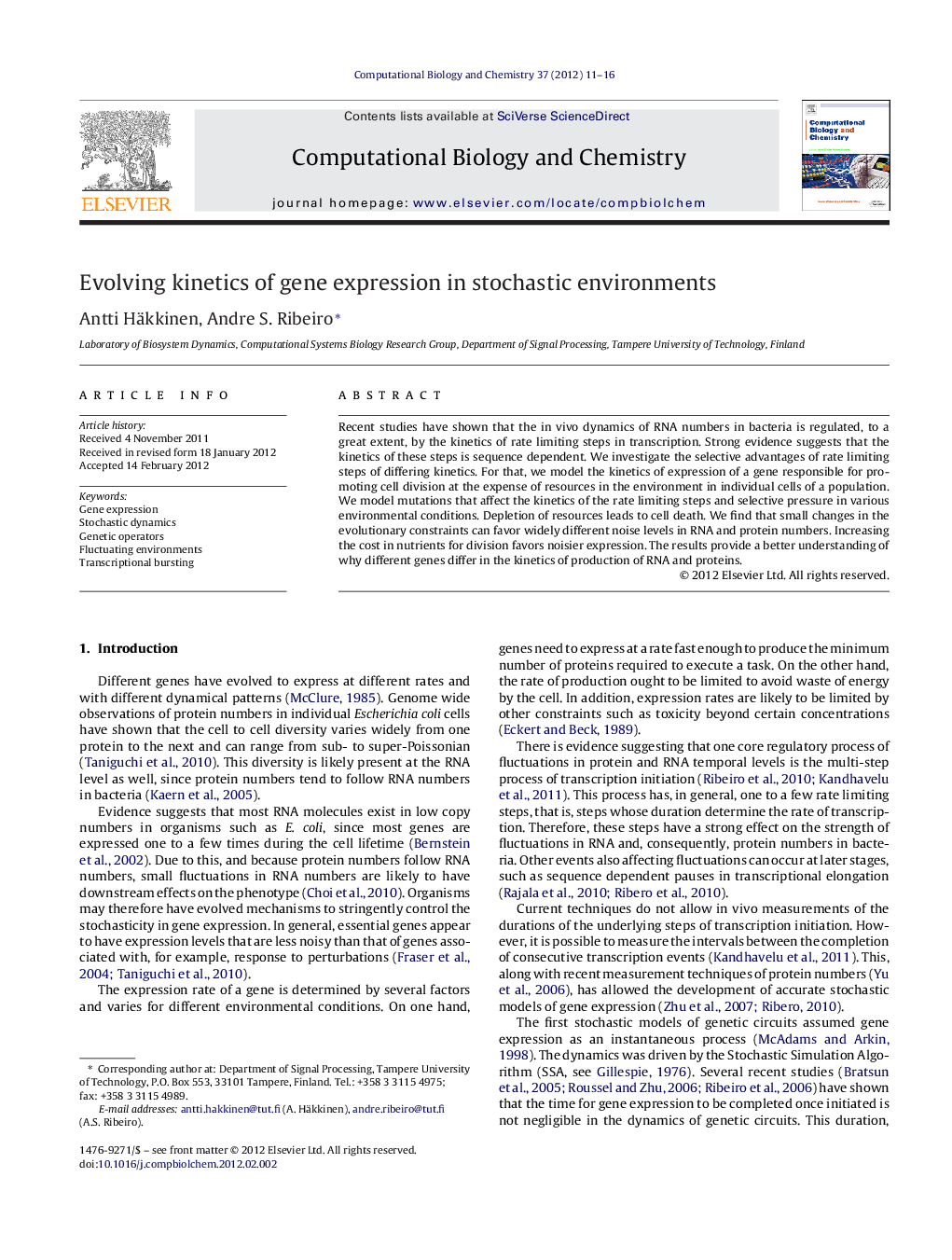| Article ID | Journal | Published Year | Pages | File Type |
|---|---|---|---|---|
| 15180 | Computational Biology and Chemistry | 2012 | 6 Pages |
Recent studies have shown that the in vivo dynamics of RNA numbers in bacteria is regulated, to a great extent, by the kinetics of rate limiting steps in transcription. Strong evidence suggests that the kinetics of these steps is sequence dependent. We investigate the selective advantages of rate limiting steps of differing kinetics. For that, we model the kinetics of expression of a gene responsible for promoting cell division at the expense of resources in the environment in individual cells of a population. We model mutations that affect the kinetics of the rate limiting steps and selective pressure in various environmental conditions. Depletion of resources leads to cell death. We find that small changes in the evolutionary constraints can favor widely different noise levels in RNA and protein numbers. Increasing the cost in nutrients for division favors noisier expression. The results provide a better understanding of why different genes differ in the kinetics of production of RNA and proteins.
Graphical abstractFigure optionsDownload full-size imageDownload as PowerPoint slideHighlights► We investigate selective advantages of rate limiting steps in gene expression. ► We use an evolutionary model at the molecule level with delayed stochastic dynamics. ► We model single gene expression of individual cells in a stochastic environment. ► When the cost in nutrients for division is high, noisier gene expression is favored. ► If division is possible at low cost in nutrients less noisy patterns are favored.
